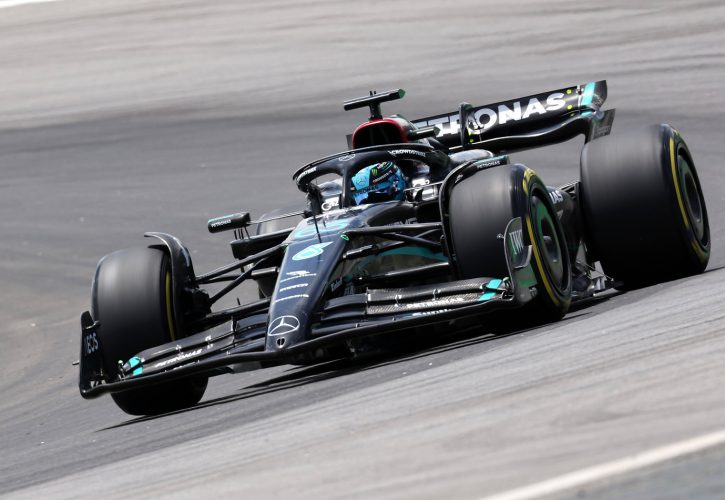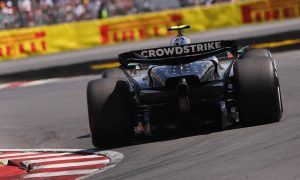
George Russell was hard-pressed after Sunday’s Sao Paulo Grand Prix to find anything positive to say about his round of racing in Brazil, admitting that it had most likely been Mercedes’ slowest weekend of the year, by far.
Soaring engine temperatures compelled Mercedes to retire Russell’s W14 on lap 57 of 71, but the Briton’s performance ahead of his DNF was indicative a weak result.
Yet the Briton had enjoyed a strong start to his race, progressing from 8th to 5th and running consistently behind his Mercedes teammate Lewis Hamilton.
While future race winner Max Verstappen and Lando Norris had checked out up ahead, Hamilton and Russell battled with Alonso at the top of the midfield.
Unfortunately, an early switch in the race from the softs to the mediums for both drivers did not bode well for the second part of their afternoon.
As the pair battled with their car’s dismal straight-line speed, they were also forced to engage in extreme tyre management due to excessive degradation.
It was a two-fold blow that relegated Hamilton to P8 at the checkered flag while Russell was already out of the top-ten when he was ordered by his team to park his car.
While Hamilton suggested after the race that his under-performance was rooted in a deficient floor on his W14, Russell pointed to tyre degradation as the culprit of his troubles.

©Mercedes
“We had a cooling problem that we couldn’t get under control for the last 20 laps,” he said as he explained his retirement. “It had no influence on our lack of performance.
“Really strange weekend, probably by far the slowest weekend of our year. So, we need to understand why because we had high expectations coming into this weekend.”
And those expectations had been build on the team’s strong displays in Austin and in Mexico City. But in Sao Paulo, Hamilton and Russell were under the impression that they were driving a completely different car given its startling pace.

©Mercedes
“We can only really put it down to tyres, because the car is the same as what we have had for the past four or five races,” reasoned Russell.
"We’ve arguably been fighting for victory in some of those races or had a car potentially capable of victory and here if it wasn’t for a great start we would have both been outside the points.
"We made the decision to run a bit more downforce and when you run more downforce you're meant to gain through the corners and keep the tyres under control.
"That wasn't the case, so we didn't have the benefit we only had the negative."
Keep up to date with all the F1 news via Facebook and Twitter






